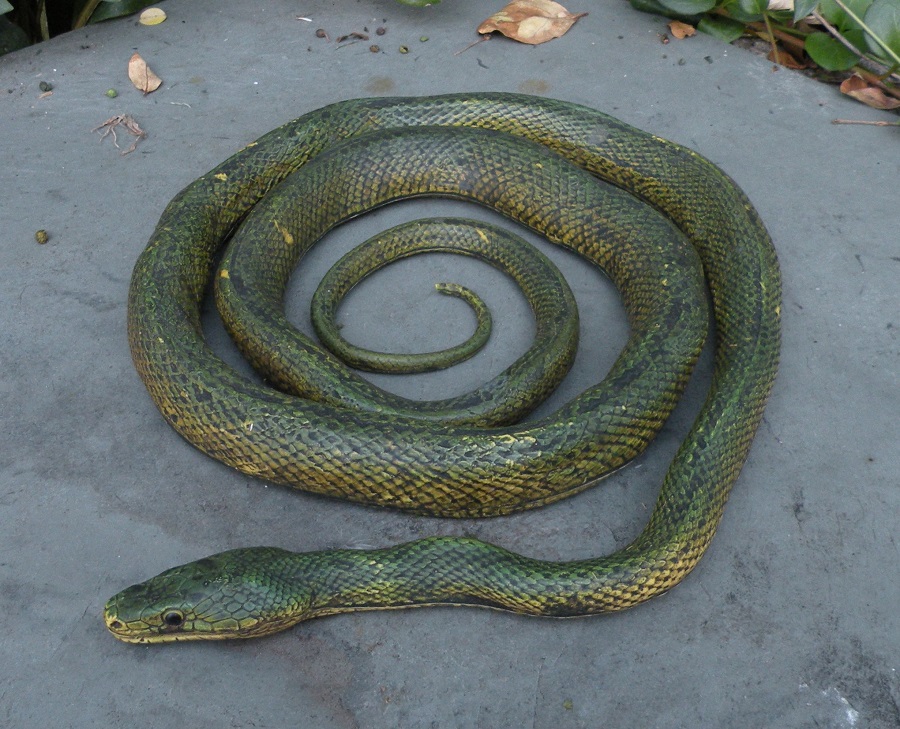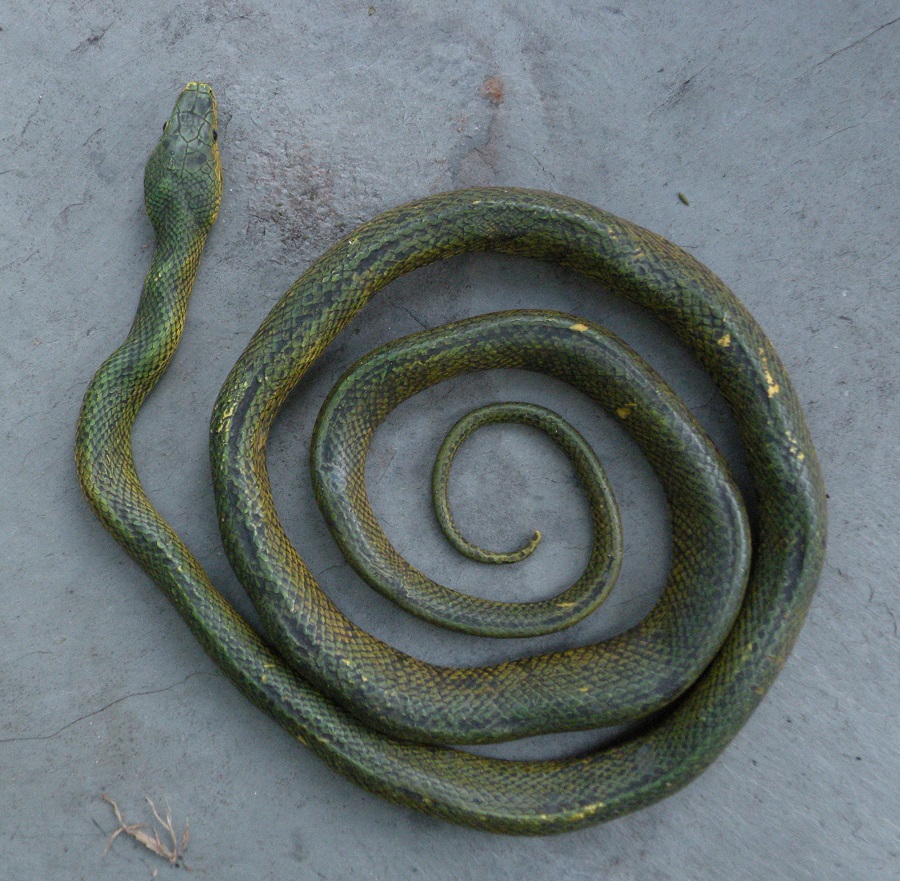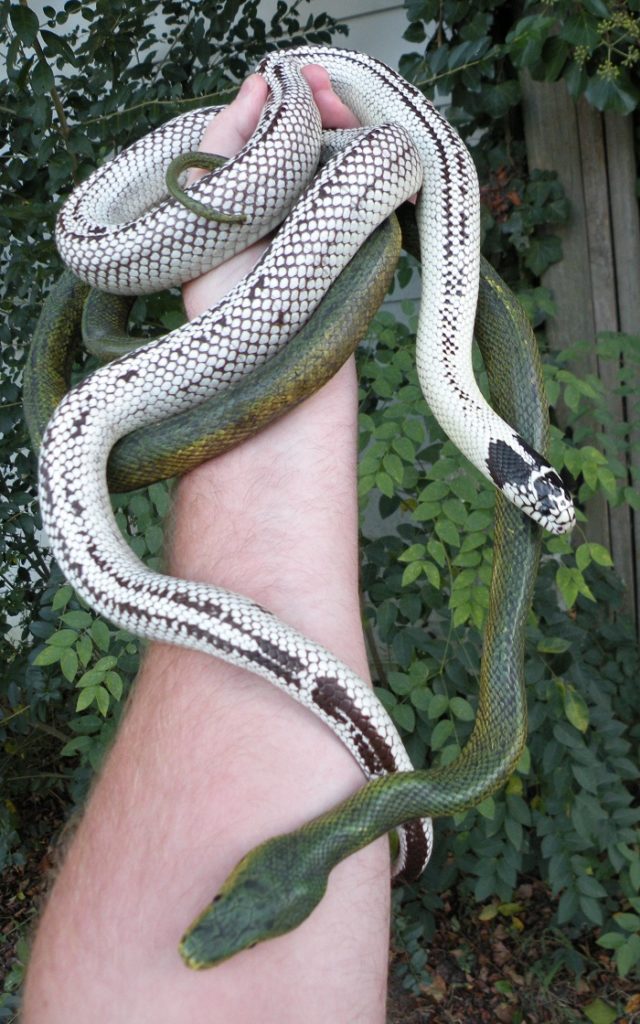AAA is a toy company that produced a wide array of toy animals throughout the 80’s and 90’s. Some of their toys are among the very best of the species they represent but I must admit AAA is largely a mystery to me. When they began and when they ended, who sculpted their toys, I couldn’t answer those questions. What I do know is that AAA produced a lot of toy animals by using molds cast from actual dead/mounted specimens, which raises even more questions. Most of those toys were reptiles, amphibians, invertebrates, and animals where such a process was feasible. As such many of their animals are incredibly lifelike and life sized too. What’s frustrating about AAA is that on many of these toys they fail to specify what the animal is. In this case we have a toy snake with “snake” stamped on the bottom and nothing more specific. Sometimes the species is obvious, sometimes not, and finding out what species you have can be a chore. In this case I’ve identified this “snake” as being an eastern green mamba (Dendroaspis angusticeps).

There are two species of green mamba, the eastern (D. angusticeps) and the western (D. viridis). The eastern is the more common of the two, ranging over most of sub-Saharan Africa and world renowned for its venomous, often fatal bite. Green mambas are elapids along with sea snakes, cobras, the Australian taipan, American coral snakes, and many other species.

What indicates that this toy snake is an eastern green mamba are its diagnostic features shared with the actual species; a narrow head shape often described as “coffin-like”, round pupils, slender compressed body, smooth scales, and green and yellow coloration. The toy measures 52.5” (133.3cm) which puts it at 1:1 scale for a small male, though eastern green mambas can grow longer, up to 6-8’ (1.8-2.4 meters) in large females.

The toy’s neutral posture is in a coiled up position and it naturally wants to retain that position even though it can be bent and stretched. As such it ends up taking up a lot less space than you might think a 4+ foot snake would, such is the case with real snakes as well. Green mambas are arboreal snakes and their color aids them well for their lifestyle, they’re ambush predators mostly preying on birds and arboreal mammals. Obviously green mambas are green but the actual snakes are much more vivid than this toy which appears quite dull and dirty in comparison.

Being molded from an actual specimen means the toy is mostly accurate but as great as the process sounds it does have its shortcomings. I think that a dedicated artist with attention to detail is better at highlighting diagnostic features and important details. For example, the underside of this green mamba fails to show the divided anal plate that a good sculptor would be sure to include. Also, molds of dead animals only represent that individual animal and will transfer any individual features or inaccuracies from the mount used, to the toy, things that might not be typical for the species. In addition, many of the toys look like dead representations of their species because that’s what they were cast from.

Nothing quite like these AAA animals has ever been produced by another company before or since. They’re entirely unique and lifelike to a degree seldom matched even by contemporary companies. They look like real animals, or at least like actual taxidermy specimens and as such are great for creating your own “mini-museum” or for educational purposes. An entire collection could be built around these remarkable figures and it would be quite the collection indeed. Some AAA toys are easily found for cheap on eBay, others are rare and expensive. Make sure to look for them in lots too.

Disclaimer: links to Ebay and Amazon on the AnimalToyBlog are affiliate links, so we make a small commission if you use them. Thanks for supporting us!




To complicate matters with some AAA figures, they do stamp them, but with the wrong name. For example, I think their bigheaded turtle, which is molded after an actual specimen, is marketed as a snapping turtle…
I noticed that as well, I have an “iguana” that’s clearly not an iguana. Strange that they would go through so much effort to make these lifelike toys but not label them better, or correctly.
yes, I believe the ‘iguana’ is a Chinese water dragon (but should confirm)
That’s my thought as well. I plan on reviewing that one too and will make sure I have a more positive ID on it when I do.
I have a few AAA lizards labeled iguanas. One is an iguana (I assume green), one I can’t ID (I’m assuming a very large anole species), one is an adult Chinese water dragon, and one is a juvenile Chinese water dragon.
Can also confirm the big-headed turtle labeled as a snapping turtle, they even made the same error twice with an adult and a juvenile. The water dragon iguana thing I can get, but how do you go through the effort to get two critically endangered turtles and mislabel them?
I would hazard a guess that the toy makers were using specimens from a collection that were themselves mislabeled or under-labeled. And back in the 90s it was substantially more difficult to get animal IDs without scientific expertise, since there wasn’t a huge repository of google-able images of every animal on the planet.
In fact, this specimen is a nice example for that possibility , as the head in no way resembles a Green Mamba, but rather some python species, Liasis sp. maybe?
I’ve identified the model as a member of genus Elaphe, possible Elaphe climacophora. The scalation of this model is certainly that of a colubrid, and the only matches I’ve been able to make have been in this genus. Specimens of the genus are also easy to come by and are in region where AAA’s casts seem to usually be sourced. I was able to get a good look at a taxidermy specimen of E. climacophora at the National Museum of Nature and Science in Tokyo, and it was virtually identical.
stumbled across a listing for AAA tiger snake on ebay wanted to know if its really a tiger snake or a different snake the seller is using a word for to gain sales as no info i can find outside the listing plus the seller has sold over 50 according to ebay
I don’t know about that one, this is the only AAA snake that I have. I looked on eBay and I don’t recognize the toy but if the seller is VegHead then I believe they’re trustworthy. They have their own website too.
Yes, it was veggie head